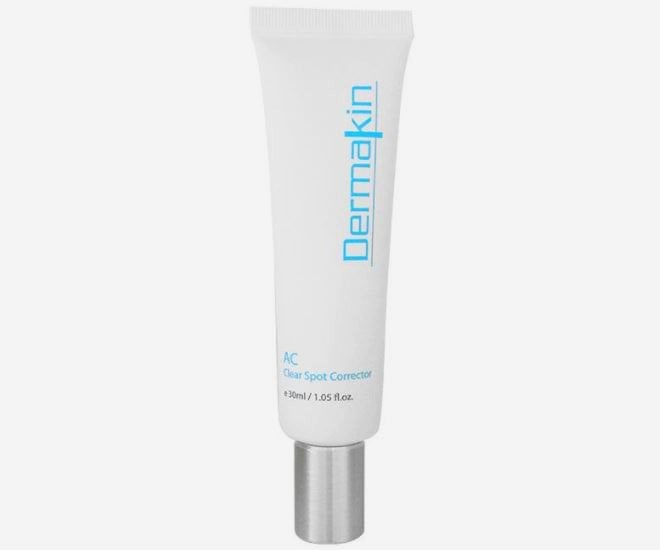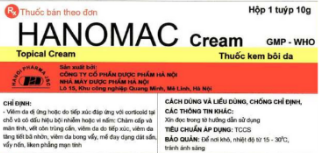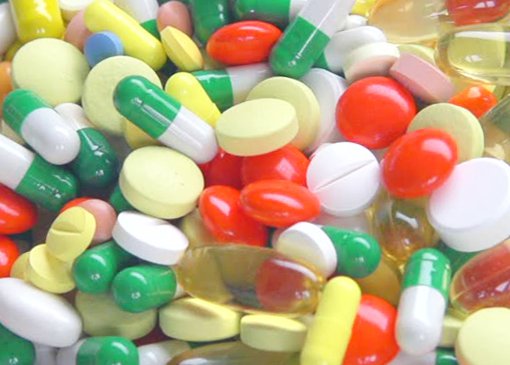What does fucicort do?
This is an automatically translated article.
Infectious dermatitis requires topical drugs, the effectiveness will be higher when combining antibiotics and anti-inflammatory drugs such as Fucicort 15g. So what does Fucicort do?
1. Ingredients Fucicort cream 15g
Each gram of Fucicort contains Fusidic Acid 20mg, Betamethasone 1mg (as betamethasone valerate) and a system of excipients: Macrogol cetostearyl ether, cetostearyl alcohol, chlorocresol, sodium dihydrogen phosphate, sodium hydroxide, liquid paraffin, purified water.
Fucicort cream 15g combines the effective antibacterial effects of fusidic acid with the anti-inflammatory and antipruritic effects of betamethasone valerate:
Fusidic acid and its salts exhibit fat- and water-soluble properties, which have a beneficial effect. strong surface and usually does not affect healthy skin. Concentrations from 0.03 to 0.12mcg/ml inhibit most strains of Staphylococcus aureus and are effective against other strains such as Streptococci, Corynebacterium, Neisseria and Clostridia; Betamethasone valerate is a topical corticosteroid with rapid onset of action in cases. There are no data from reliable studies defining the pharmacokinetics of Fucicort cream 15g when used topically in humans. However, research has shown that fusidic acid can penetrate the skin in humans, the extent of which varies and depends on several factors such as duration of exposure and skin condition. After entering the body, fusidic acid is excreted mainly through the biliary tract and a small amount is excreted in the urine.
Betamethasone shows good absorption following topical application. The extent of absorption depends on several factors such as the condition and location of the skin where the drug was applied. Betamethasone in Fucicort is extensively metabolised in the liver, a small amount in the kidneys, and the inactive metabolite is excreted in the urine.
2. What effect does Fucicort have?
Fucicort cream 15g is indicated for the treatment of inflammatory skin diseases caused by infections or suspected bacterial infections.
3. Dosage of Fucicort cream 15g
Apply a small amount of Fucicort 15g to the affected area, twice daily until desired treatment results are achieved. However, a course of Fucicort monotherapy should not last more than 2 weeks.
4. Contraindications to Fucicort 15g
Contraindications Fucicort 15g with known hypersensitivity to fusidic acid/sodium fusidate, betamethasone valerate or to any of the excipients. Because it contains corticosteroids, Fucicort 15g cream is contraindicated in the following cases:
Skin infections caused by bacteria, fungi or viruses (herpes or chickenpox); Skin diseases associated with skin tuberculosis or syphilis; Perioral inflammation and rosacea.
5. Notes when using Fucicort
Prolonged use of corticosteroids (including Fucicort) should be avoided, especially in neonates and children because of the following effects:
Adrenal cortex suppression may occur during Fucicort cream 15g application process, even in the case of no bandage after applying the drug; Skin atrophy may occur, is common in the facial skin and lower risk in other parts of the body during prolonged treatment with topical corticosteroids such as Fucicort; Use caution when applying Fucicort 15g to the skin near the eyes because of the risk of glaucoma that may occur when the drug penetrates the eye; Chronic skin infections require systemic treatment.
6. Be careful when using Fucicort
Bacterial resistance to fusidic acid has been reported. Therefore, like all antibiotics, prolonged or repeated use of Fucicort is a risk factor for antibiotic resistance. Concomitant use of antibiotics with corticosteroids such as Fucicort cream 15g should be limited to 2 weeks because anti-inflammatory corticosteroids may mask or obscure the manifestation of infection or hypersensitivity reactions. Because it contains corticosteroids, it is necessary to avoid using Fucicort in cases of skin atrophy, skin ulcers, common acne, applied to the skin of the genital area or folds. Use caution when applying Fucicort 15g cream on large areas of skin and face, and limit its use in areas with open wounds and mucous membranes. The ingredient Fucicort cream 15g contains cetostearyl alcohol, so there is a high risk of local skin reactions (such as contact dermatitis) and the ingredient chlorocresol can cause allergic reactions. Fucicort 15g according to studies may have negligible influence on the ability to drive and use machines. Pregnancy: Safe use of Fucicort 15g cream for pregnant women has not been established. Animal studies have shown that fusidic acid is not teratogenic, but corticosteroids have been shown to do so. To be on the safe side, Fucicort should not be used during pregnancy or lactation unless absolutely necessary. No effect on the nursing infant has been observed due to systemic absorption of the active ingredients fusidic acid and betamethasone in fucicort in nursing women, especially when applied topically to a limited area of skin. Therefore, Fucicort can be used for women who are breastfeeding as long as it is not applied to the skin around the nipple.
7. Undesirable effects of the drug Fucicort
The most common undesirable effects when using Fucicort 15g cream are various manifestations of irritation at the application site. In addition, allergic reactions have also been reported.
Based on clinical data regarding Fucicort, approximately 3% of patients experienced the following undesirable effects:
Allergic reactions; Contact dermatitis; Dry skin, rash, irritation, burning sensation, pain, itching, or red rash. Side effects observed related to the corticosteroid component of Fucicort:
Skin atrophy, capillary dilation and striae, especially with prolonged use; Appearance of lymph cysts; Hairy hair; Inflammation of the skin around the mouth; Allergic contact dermatitis; Skin loss of pigmentation; Systemic effects such as glaucoma and adrenocorticoid blocking.
Please dial HOTLINE for more information or register for an appointment HERE. Download MyVinmec app to make appointments faster and to manage your bookings easily.
This article is written for readers from Sài Gòn, Hà Nội, Hồ Chí Minh, Phú Quốc, Nha Trang, Hạ Long, Hải Phòng, Đà Nẵng.




